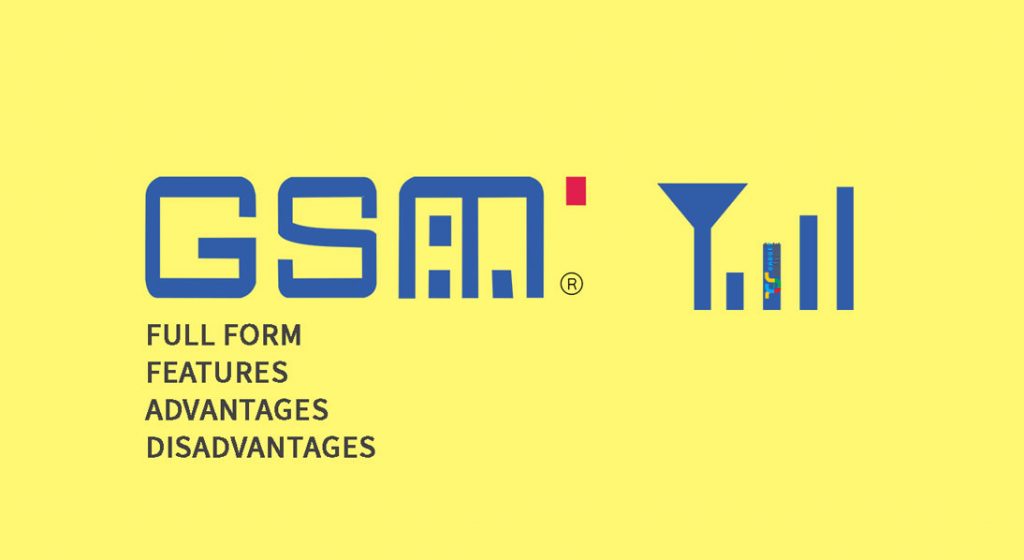We usually heard about GSM many times but we are not sure about its full form. Sometimes it’s quite surprising that how we are totally blank regarding something that we are using currently or used. GSM was a replacement for the first generation (1G) cellular networks might every person knows but have no answer for what is GSM stands for? To get informed is always the best option, so let’s read about GSM in this page.
Full Form of GSM
GSM stands for Global System for Mobile communication. To describe protocols for second generation (2G) digital cellular networks it is a standard developed by European Telecommunication Standards Institute (ETSI) by replacing the 1G (first generation) cellular network. It is not only used for voice calls, but it can also be used for data computing and sending text messages. By connecting a GSM-enabled phone with his laptop a user can send or receive e-mails, faxes, browse the internet, check security, etc.
Composition of the network
The GSM network has four separate parts that work together to function as a whole:
- The mobile device itself.
- The base station subsystem (BSS).
- The Network switching subsystem (NSS)
- The Operation and support subsystem (OSS).
The mobile device connects to the network via hardware. The subscriber identity module (SIM) card provides the network with identifying information about the mobile user.
The BSS (Base Station Subsystem) handles traffic between the cell phone and the NSS. It consists of two main components:
- The Base transceiver station (BTS)
- The Base station controller (BSC).
The BTS contains the equipment that communicates with mobile phones, largely the radio transmitter-receivers and antennas. The BSC communicates with and controls a group of base transceiver stations. The NSS portion of the GSM network architecture often called the core network which tracks the location of callers to enable the delivery of cellular services.
Also Read: Difference Between CDMA and GSM Mobiles Phone |GSM vs CDMA
GSM aka Global System for Mobile Communication mainly follows the three frequencies:
- 900 MHz: Used by the original GSM system.
- 1800 MHz: Used to support the growing number of subscribers.
- 1900 MHz: Used in the US mainly
Advantages of GSM
- Vast Coverage- GSM users essentially have coverage in over 218 countries. It has a harmonized spectrum, which means that even though different countries may operate on different frequency bands, users can transfer seamlessly between networks and keep the same number.
- Phone Variety for Users- It is used throughout the world; there is a greater variety of phones that operate on GSM. Therefore, consumers have more flexibility in choosing a handset that fits their specific desires.
- No Roaming on International Calls-Users is not charged a roaming fee for international calls because GSM is the same network worldwide.
Disadvantages of GSM
- Electronic Interference- As GSM uses a pulse-transmission technology due to which such interference occurs. As a result, many locations such as hospitals and airplanes require cell phones to be turned off.
- Bandwidth Limitation– GSM is that multiple users share the same bandwidth which can encounter transmission interference. Therefore, faster technologies, such as 3G, 4G have been developed on different types of networks than GSM, avoid such bandwidth limitations.

